THE PERFECT PLACE TO DIE
Between 2008 - 2010 Toby de Silva made dozens of forays into Japans Aokigahara forest and its environs simultaneously documenting both the uncanny natural environment and the forests sinister secret
The first thing you notice is the silence, an uncanny embrace of tranquility paradoxical to the immersion in nature. You don’t hear birds or insects, you don’t hear traffic from the road you just left, if you encounter another person you don’t hear them, they just appear, pass by and are gone. Sometimes it’s a couple of hikers, usually it’s a middle aged man in a business suit. Occasionally the wind will blow the treetops and for a moment there is a feeling of life, but it passes quickly and the silence returns to leave you waiting for the sound of a twig on the floor to snap ominously behind you or for the bear who’s warning sign attached to a lamp post you observed skeptically from the safety of your vehicle to come crashing through the undergrowth enraged by your presence. But they never materialise and you are alone in a landscape permeated with the resonance of death

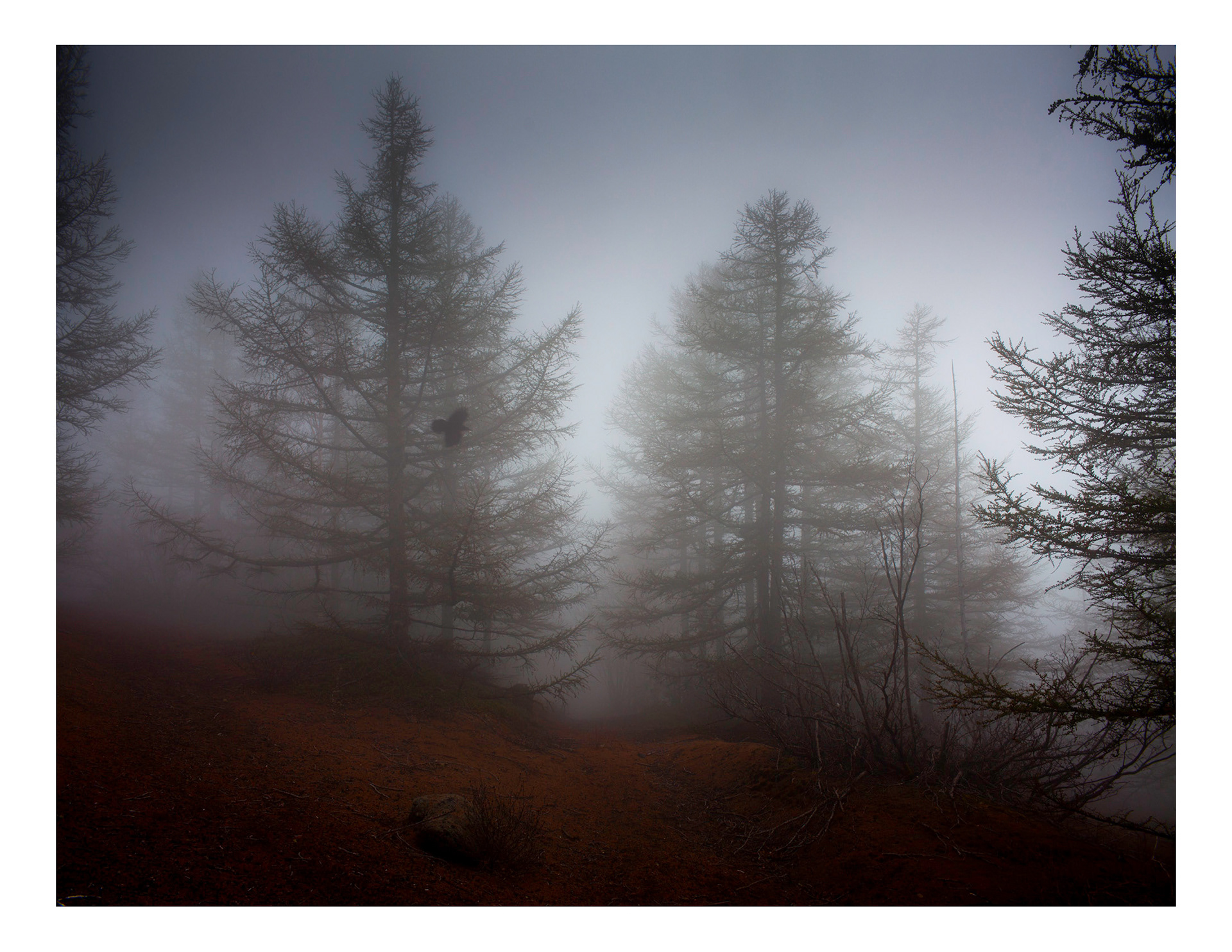


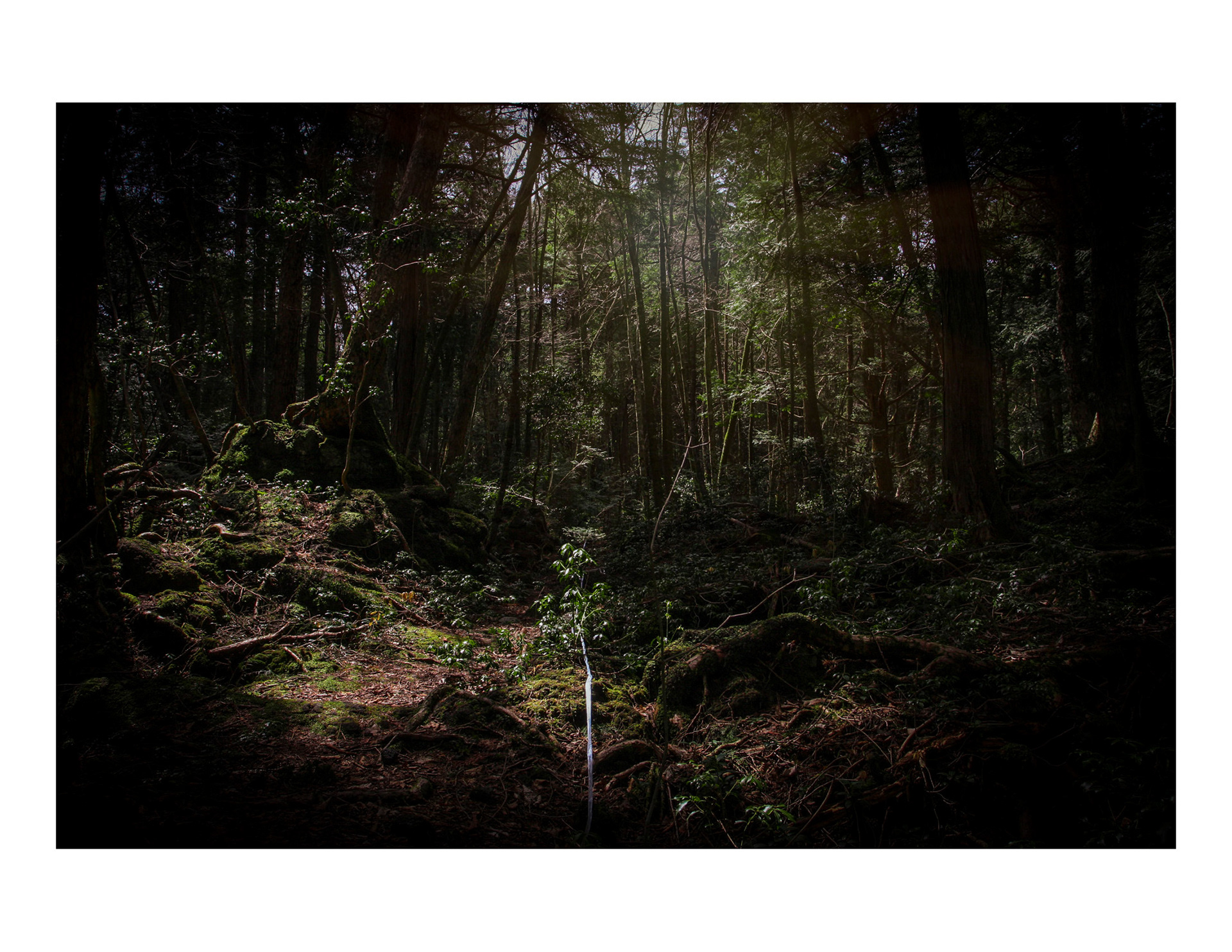



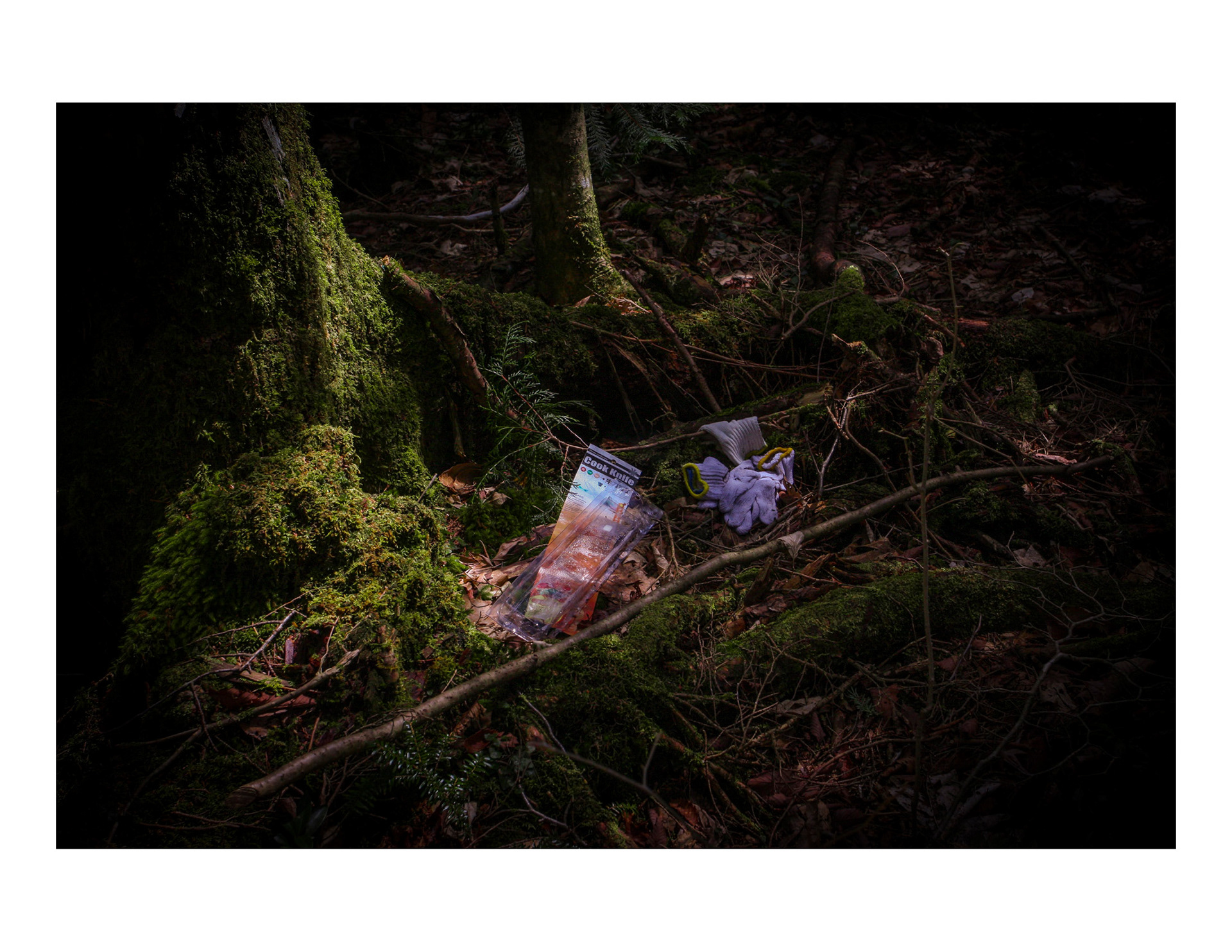
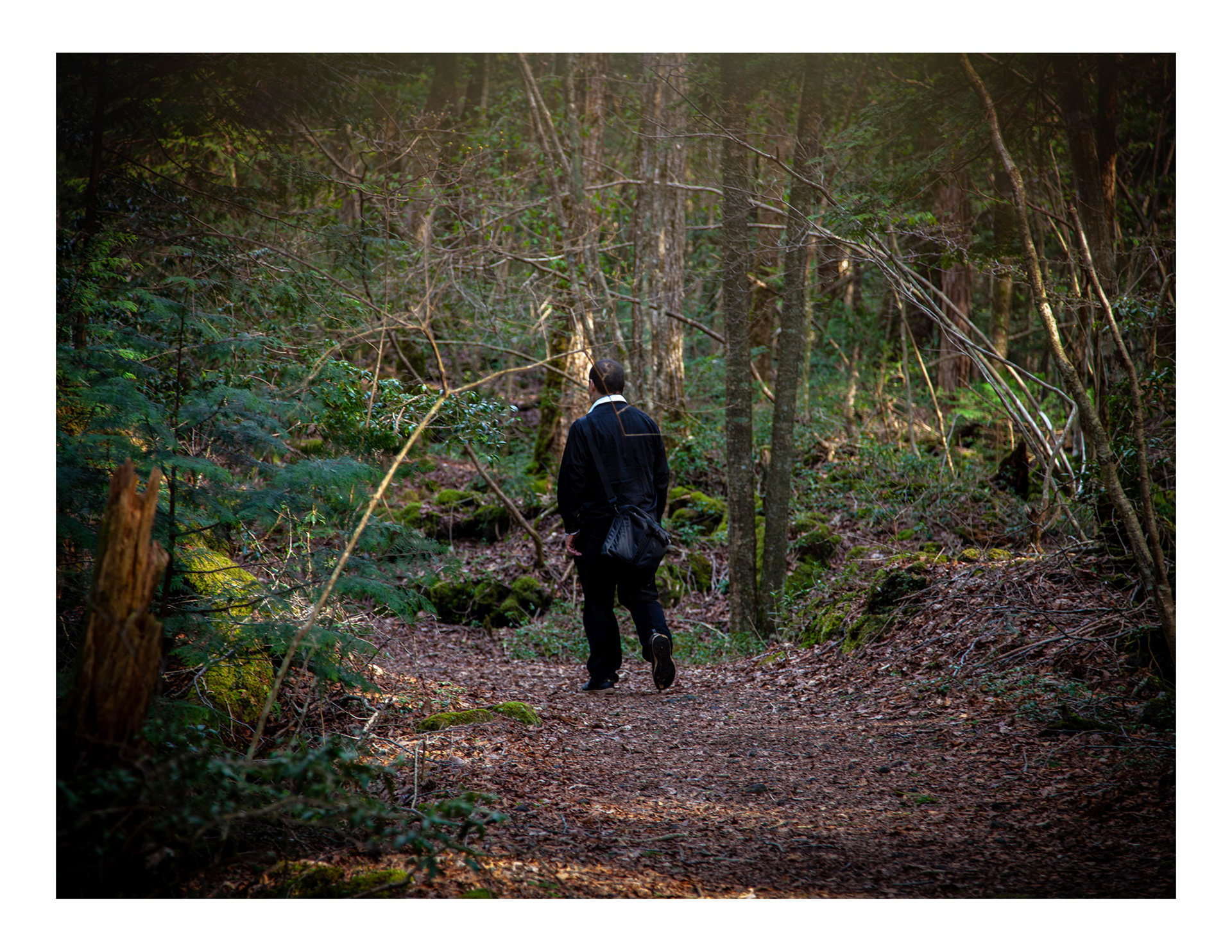








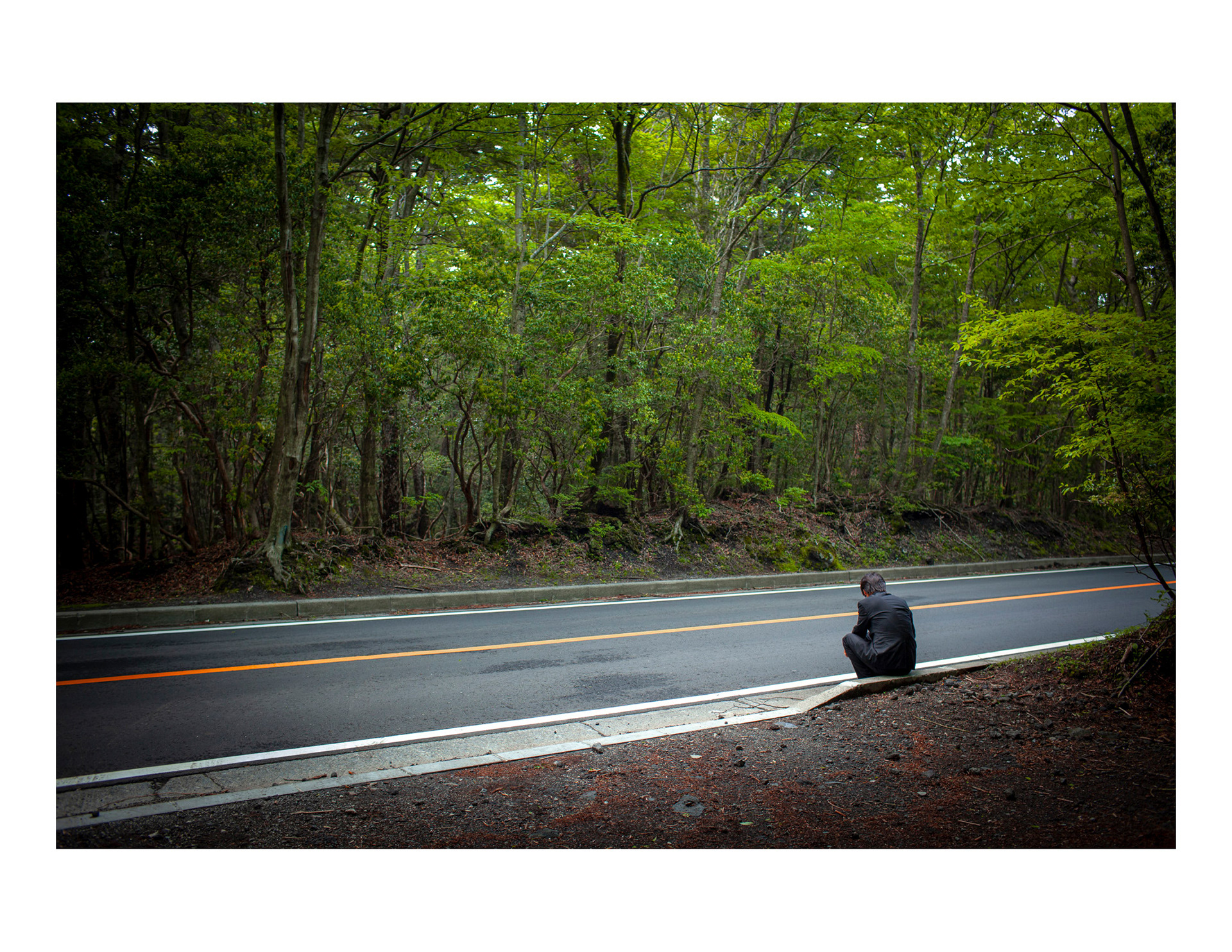


The terrain is irregular, an endless grotesque topography of volcanic rock and twisted, tangled trees. Stepping off the few defined trails soon leads to the detritus of despair, the residue of a campsite, a last supper of instant noodles uneaten as there is no source of hot water, cigarette boxes and every type of alcohol, discarded clothing, pornography, the packaging from kitchen knifes and lengths of rope. Then there’s the tape, miles of it going in every direction, some fresh, some ancient and frayed, dissecting the forest, each piece with its own story leading to another victim someone once discovered, but in their place are the religious effigies, the bouquet’s and the fruit that the bereaved have left in remembrance
The Aokigahara forest is positioned on the northwestern slopes of Mount Fuji, which towers majestically over it like a benevolent guardian. There are stories of distant generations practicing Ubasute, the abandonment of parents as a form of euthanasia in the forest. In recent times Aokigahara gained its notoriety through Seicho Matsumoto’s 1960 novel Kuroi Jukai (Black Sea of Trees) wherein a couple of tragic young lovers commit suicide in the forest. The 1993 Complete Manual of Suicide by Wataru Tsurumi, a book that sold over a million copies in Japan that is often reportedly found amongst remains further enhanced the forests notoriety by proclaiming it to be ‘The Perfect Place to Die’. On average around seventy people successfully take their lives each year in the forest from the hundreds who enter with the intention and either reconsider or survive the attempt, making Aokigahara Jukai the worlds leading suicide destination.